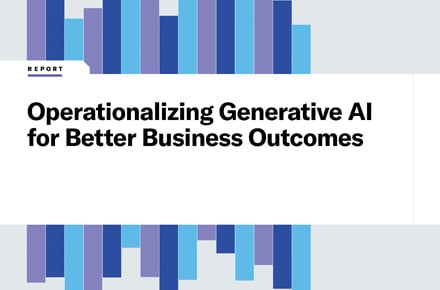
How Organizations Can Increase Employee Productivity, Satisfaction in the Modern Workplace
Historically, humans had simple—but strenuous—jobs: hunting and gathering enough food to survive. These acts of survival have only been replaced recently. Day-to-day survival is not a concern in the developed world, and our daily lives have adopted a different focus in the world of work.
Work has expanded beyond the two tasks of hunting and gathering. Modern work is divided into five buckets: outputs, projects, products, productivity goals, and key performance indicators (KPIs.) Work is split across industries and companies with hundreds of departments employing a variety of distinct roles.
As innately social creatures who thrive on collaboration and connection, humans have been wired to be part of a team. Remote working brings new needs that must be addressed to satisfy our craving to explore, connect and socialize. In the modern work world, we turn to collaboration and teamwork—concepts remote and hybrid working fundamentally contradict.
Taking a deeper look into the ways humans actually work will be vital for organizations looking to make the modern workforce paradigm a success.
How ‘Zoom Gloom’ Affects Productivity
For many, the workday seems to have become longer, despite factors such as a reduction in commute time. Work volume, but not necessarily productivity, has increased in turn. The fatigue caused by back-to-back meetings and no-rest days has become commonplace for remote workers. In some workplaces, collaboration across different time zones has increased “Zoom gloom” to the point where employees even need to ask for bathroom breaks.
On days filled with video meetings, stress begins to set in at about two hours into the day. Due to elevated levels of sustained concentration, fatigue typically hits about 30-40 minutes into a video conferencing meeting.
Data from 2021 shows employees working from home log extra hours every day, which translates to about four or more hours a week compared to those who put in standard 40-hour weeks. With remote employees working marginally longer each day on average, their productivity is increased, or at least remains the same, as those working in an assigned office. While there might not be a straight-line correlation between hours worked from home and an employee’s productivity levels, understanding the dynamics of this new digital workplace can help organizations create environments that boost employee happiness, including reevaluating company culture and expectations around how individuals and teams can effectively collaborate to meet their potential.
Studies have shown that humans work best in short, sharp bursts. Psychology suggests the most effective way for driving productive work is to set a timer for at least 20 minutes, remove all distractions and work until the signal. This is not always possible in the modern world, but neither are constant calls and continual outcome delivery.
Psychologists recommend one-hour meetings should become 45 minutes with a 15-minute break to help employees prepare and re-energize, and 30-minute meetings should be reduced to 20 minutes. This way, we all become more productive. This approach introduces a fundamental shift for workforces that requires new culture, governance and performance management procedures.
The Six Pillars of the Future of Work
When executed poorly, remote or hybrid work environments can harm a company’s productivity, effectiveness and culture. A solid technology infrastructure is critical to ensure employees’ ability to connect, communicate and collaborate in the hybrid workplace.
Whether employees are working completely remotely or the business is working to integrate remote workers into office environments using a hybrid model, let’s explore the six pillars that can help support the future of work:
- Location flexibility. The organization fully embraces a digitally elastic operating model and acknowledges and accepts new work behaviors. This helps the business deliver greater productivity while improving employee experience. The use of data and analytics tools—such as digital experience monitoring (DEM) tools—assists the hybrid workforce in planning activities, and can be flexed at short notice to address changes in demand.
- Integrated autonomy. Embedding robotic process automation, artificial intelligence and machine learning algorithms across the enterprise—including in the back office—keeps productivity high and ensures employees are most effective. When embedded end to end, these tools provide insight into employee behavior and enable further “shift left” activity to drive employees to self-service in new hybrid models.
- Always-on IT. Cloud-based systems ensure employees can easily access their work and serve customers from any device or location, enabling revenue streams to remain unhindered. In the back office, IT’s use of automation tools, such as sentiment analysis and just-in-time principles, ensure a seamless service is offered while proactively delivering problem-solving capabilities.
- Digital connectivity. Streamlining collaboration for employees and customers drives technology adoption and provides a more seamless customer experience. Offering innovative yet simple interactions with customers through video support, messaging and chat support in more cost-effective environments—such as the employee’s home—ensures a win-win for both the customer and company.
- Collaborative environments—online and in-person. Providing a collaborative environment means higher productivity in shorter, sharper bursts and can also improve work-life balance. Delivering these tools and opportunities to employees provides a smoother and stickier customer experience, resulting in higher satisfaction all around.
- Adaptable workspaces. Operating from home with the right technology and employee support can be more cost effective, and some organizations are even shrinking their office footprint. Expensive office space will become more adaptable and used to enable true hybrid collaboration. In the front office, organizations may see significant reduction in contact center size and shape, and a shift to a more open, adaptive and collaborative space to serve a business’ needs.
The organizations that make a success of hybrid working will be those that pay close attention to these six pillars from a technology perspective, while embracing the realities of human productivity and psychology.
Explore how Unisys can help your organization thrive as a digital workplace.
















